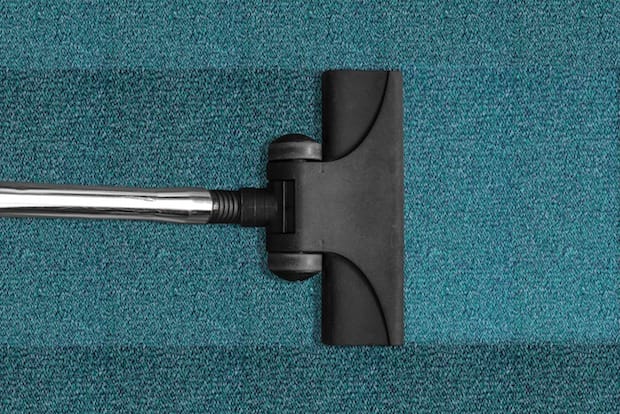Table of Contents
III. Asthma at School and Work
What is Asthma?
Asthma is an incredibly common respiratory disease that affects around 334 million people worldwide. [1] Asthma is a condition that causes your airways to narrow, making it more difficult for you to breathe.
Asthma is a chronic condition with no cure. However, there are several different types of prescription medications that can help reduce and treat asthma symptoms. Usually, asthma medications come in the form of an inhaler such as Advair Diskus (fluticasone and salmeterol) or Asmanex Twisthaler (Mometasone). Not all medications are inhaled like Singulair (Montelukast), which is another common asthma treatment. Asthma patients also require a quick-relief inhaler such as Ventolin (albuterol) if they experience sudden shortness of breath. If your doctor has prescribed you asthma medication you can order them online through RxConnected to save money.
The symptoms of asthma vary among patients. Many patients have regular flare-ups of their symptoms, while others may have long periods of remission. Others may only experience symptoms during exercise. [2]
Asthma causes breathing difficulties and can cause several different symptoms. If these symptoms worsen or occur suddenly, you may be having an asthma attack. The most common asthma symptom is shortness of breath, which feels like you are unable to breathe properly. This results in rapid inhalation in an attempt to inhale sufficient oxygen. Other common asthma symptoms include wheezing, coughing, tightness in the chest, and sleeping difficulties. [3]
It is unknown what causes asthma, although it is believed to be a combination of environmental and genetic factors. [4] While many asthma patients have close family members that also have the condition, many people develop the condition without a family history of asthma. Environmental factors can include poor air quality, pollution, and allergies. Around 80 percent of asthma patients are allergic to substances in the air, such as pollen, dust, grass, and animal dander. [5] Because airborne allergens trigger many asthma patients, it is crucial to manage your environment when possible. Asthma triggers vary between patients, so it is important to try and identify any personal triggers. Keep reading to learn how to manage your environment to reduce your home, school, and workplace symptoms. If you want more information about asthma, visit our blog to learn more about asthma. There are many common asthma triggers in the air inside your home. This includes dust mites, animal dander from pets, second-hand smoke, mold, and chemicals from cleaning products. Any of these substances in the air may worsen asthma symptoms. [6] One of the most effective ways to manage asthma symptoms in the home is to clean it regularly. Dust mites are one of the major indoor asthma and allergy triggers. When dusting, make sure to use a damp cloth or mop to limit dust in the air. Frequent vacuuming can help remove dust from carpets. You should clean with a vacuum cleaner that has a high-efficiency filter. If possible, removing carpets from home and replacing them with hard floors can be very helpful. [7] Mite-proof covers are available for your mattress and pillows and can help with your asthma symptoms. Regardless of these covers, all bedding should be washed regularly in hot water and dried at a high-temperature setting. You may think that leaving the windows open will help keep the air in your house fresh. However, leaving windows and doors open can allow pollen and other triggers to enter your home. It can be beneficial to keep your windows and doors shut and use air conditioning instead. Make sure to change your home air filter at regular intervals such as every 3 months. You may want to consider higher filtering air filters as well that remove more irritants from the air in your home. You can check the air quality and pollen count of your local area online. If you do prefer to keep windows open, then you should check the air quality beforehand. Using a dehumidifier is another way that you can control the air in your home. These devices dry out the air and can help reduce mold in damp areas. If mold is a problem in your home, consider using a bleach solution to wash these areas. You may also want to remove house plants along with wallpaper or carpets in bathrooms and basements. [8] Dust can settle anywhere, especially on items that are rarely moved or used. It can be easier to remove small items from the bedroom than to clean around them. These small items can include books, figurines, collectibles, and picture frames. Store other items inside drawers or cupboards to prevent a build-up of dust. While you do not need to remove all items, a general de-clutter of your home can help tremendously. Asthma is one of the primary reasons children miss school, accounting for almost 14 million missed school days. [9] While it is easier to control your home environment than your child's school, there are still things that you can do. At the start of the school year, consider scheduling a meeting with your child’s teacher. Inform the teacher on symptoms to look out for and the correct dosage and frequency of your child’s asthma medication. You can also encourage the school to adopt more asthma-friendly programs. This can include encouraging air conditioning, teaching about pollution, banning smoking, and reducing the amount of time that the school bus idles. [9] No matter where you work, your environment may expose you to different allergens and irritants. Common substances that may trigger your symptoms at work can include chemical fumes, solvents, pests, and exhaust. Once you identify your triggers, they can often be avoided or removed. It may be beneficial to record the severity of your symptoms, especially if you work in different locations or rooms. This may help you narrow down the cause of your asthma symptoms. One of the most common problems in an indoor workplace is inadequate ventilation. If you feel that the ventilation system is not functioning correctly, you should speak to a superior and mention that it affects your health. If you can identify a certain trigger, it may be possible for that trigger to be removed. It may be a certain chemical solvent used for cleaning or an area of the workplace with dampness or mold. You can also speak to your manager about keeping your workplace smoke-free to prevent your asthma symptoms. [10] The content in this article is intended for informational purposes only. This website does not provide medical advice. In all circumstances, you should always seek the advice of your physician and/or other qualified health professionals(s) for drug, medical condition, or treatment advice. The content provided on this website is not a substitute for professional medical advice, diagnosis, or treatment.
Creating a Suitable Home
a. Regular Cleaning

b. Control the Air Flow
c. Removing Mold
d. Remove Knickknacks
Get savings updates for Advair Diskus
Asthma at School and Work
a. Asthma at School

b. Asthma at Work

